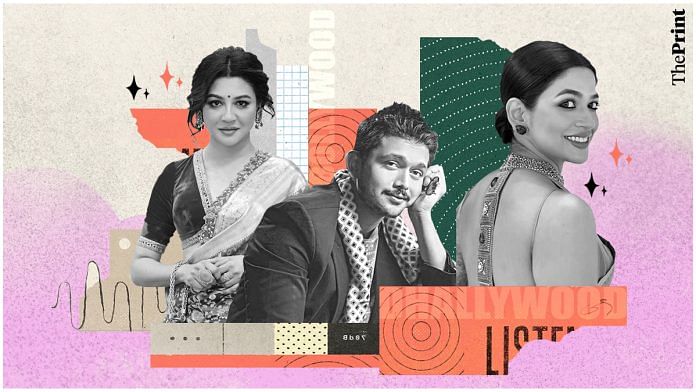Dhaka: When Kadak Singh received a standing ovation at the 54th International Film Festival of India held in Goa, Jaya Ahsan knew she had chosen the right project for her Hindi OTT debut. A leading actor in Bangladesh, Ahsan is on the lookout for one thing and one thing alone – roles that challenge the artiste in her.
And the Indian entertainment industry, especially OTT, is proving to be the perfect hunting ground. Ahsan isn’t the only Bangladeshi actor to cross the cultural border. This year alone, three popular movies had Bangladeshi actors in starring roles. Apart from Ahsan, Azmeri Haque Badhon played Tabu’s lover in Khufiya, and Arefin Shuvo became Sheikh Mujib in Shyam Benegal’s Mujib: The Making of a Nation.
It would appear that, after the famed Hilsa, Bangladeshi actors are the new flavour of the season in India. The rise of streaming platforms, red tape and security issues with talent from Pakistan, and stronger plots with characters that go beyond trite stereotypes—a confluence of perfect currents have all contributed to this trend.
“Two Bengals are coming together. Talent is finally getting shared. How can this be a bad thing?” says film director Subhrajit Mitra who won a national award for his 2021 film Avijatrik. He predicts bigger and better collaborations. “But directors and actors from West Bengal should also get to work in Bangladesh more frequently,” he adds.
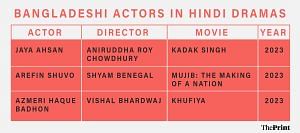
For many Bangladeshi actors, Bollywood is a natural progression from Tollywood, the film industry of West Bengal. Today, there are more opportunities to make the transition. There was a time when Hindi cinema was mostly centred around Mumbai, Delhi and Punjab, and catered to a largely North Indian sensibility. That’s changed. Characters have become more diverse. They come from different parts of India and are no longer caricatures or stereotypes. This has opened up space for regional actors.
OTT platforms are pushing the envelope—from lesbian lovers navigating spy games (Khufiya) to a financial officer grappling with retrograde amnesia while trying to solve chit-fund cases (Kadak Singh) to the world of drugs and thugs in rural Punjab (Kohrra).
What’s drawing Bangladeshi actors to Bollywood? Strong roles or the fact that directors are now looking beyond borders to hire new talent?
Kadak Singh director Aniruddha Roy Chowdhury says it’s both.
“Why just Bangladesh? If the role so demands, actors from other countries will also work in Indian cinema,” he adds.
Also read: ‘Good girls’ don’t go to Delhi’s Paharganj at night. ‘Go home!’ is what they hear
Feeding creative hunger
Jaya Ahsan is no stranger to fame. Well-loved by Bengali moviegoers in India and Bangladesh, she is happy that her Kadak Singh character, Noyona, is being talked about.
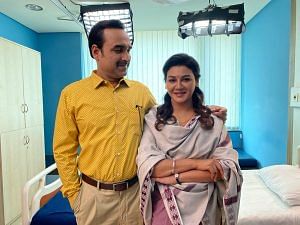
“I have loved director Aniruddha Roy Chowdhury’s cinema, and Pankaj Tripathi as co-star is a dream. But it was Noyona that pulled me to this project,” Ahsan told ThePrint over the phone from Kolkata. She was looking for a female character who was empowered from within. “And in Kadak Singh, I found her. I want to be Noyona for real.”
Bangladeshi star Arefin Shuvo, who played the titular role in Mujib: The Making of a Nation, calls Mumbai his second home. He’s hoping that this will lead to more work opportunities with Indian filmmakers like Rajkumar Hirani.
“I would like to collaborate with everyone and everybody here. There are a lot of Bengali directors like Anurag Basu, Shoojit Sircar, Srijit Mukherjee, but one person I’m a huge fan of is Rajkumar Hirani. His films have helped me in my life. If I ever get a chance to play a small role in his film, I would love to do that,” he told the media in October. Jointly produced by India and Bangladesh, the film looks at the life and times of Bangladesh’s first President, Sheikh Mujibur Rahman. The biopic chronicles some of the most tumultuous events of South Asian history – from the Partition of India to the 1971 Bangladesh Liberation War to Bangabandhu’s tragic assassination.
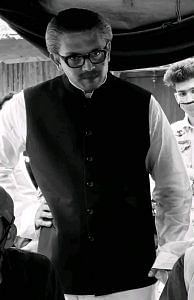
Like Ahsan, Azmeri Haque Badhon was also drawn to the unique attributes of her character in Khufiya. She was particularly excited about portraying homosexuality, a taboo topic in socially conservative Bangladesh.
Though they have made their Bollywood debut only recently, both Ahsan and Badhon are popular names in Kolkata thanks to their work in the Bengali OTT space. While Ahsan has played the lead in Srijit Mukherji’s hit film Dawshom Awbotaar (2023), Badhon has acted in Mukherji’s Robindronath Ekhane Kawkhono Khete Aashenni (2021). Ahsan has also worked with other big names in Tollywood, such as filmmaker Kaushik Ganguly.
“It is the common language and culture that West Bengal and Bangladesh share that make it easy for Bangladeshi actors to be part of cinema and OTT from West Bengal,” says Bangladeshi art promoter Tariqul Islam Jewel, who tracks the career trajectory of actors working in India.
Kolkata-based film critic Bhaswati Ghosh, however, sounds a word of caution; what will eventually determine the import of more actors from Bangladesh is the success of their projects.
“Mujib was a flop in India, though it did well in Bangladesh. Khufiya has also not done well even though it is a Vishal Bharadwaj film. Unless their films become hits, Bangladeshi actors in Hindi cinema will become a passing fad.”
India’s relationship with Pakistani actors
The Hindi film industry is warming up to Bangladeshi actors only now. Before this it was in a long – and often rocky – relationship with Pakistani talent. Actors like Ali Zafar, Fawad Khan, Mahira Khan and Saba Qamar have been part of some of Bollywood’s biggest productions.
Friction between the two countries has always cast a shadow over Pakistani actors starring in Hindi films. Terror attacks and border tensions have people questioning whether the Indian entertainment industry should welcome them.
The relationship took a turn for the worse after the 2016 Uri attack. The Indian Motion Picture Producers Association resolved not to work with Pakistani artistes on the grounds of “security” and “patriotism”. After a seven-year gap, in October this year, the Bombay High Court quashed a petition seeking a complete ban on Indian citizens, companies, and associations from engaging with Pakistani actors, singers, musicians, lyricists, and technicians.
Also read: Pro-Kabaddi is bigger than IPL in small towns. And India is making it truly international
Nuanced roles attract talent
Bangladesh has been India’s strategic ally and Prime Minister Narendra Modi shares a particularly warm relationship with Sheikh Hasina. But it’s only in recent years that Bangladeshi actors have made forays into the Hindi film industry.
“It’s the rise in OTT,” says Roy Chowdhry. Bangladeshi actors are more interested in the nuanced roles being written now—something both Ahsan and Badhon agree with.
Bangladeshi OTT platform Chorki entering West Bengal and West Bengal’s OTT platform Hoichoi operating in Bangladesh has facilitated this movement.
“Once Bangladeshi actors have worked in West Bengal, Mumbai is hardly a distant dream,” says Roy Chowdhury.
Four films starring Ahsan were screened at IFFI—Kadak Singh, Fereshteh (2023) by Iranian director Morteza Atashzamzam, Putul Nacher Itikatha (2022) by Sumon Mukhopadhyay, and Ardhangini (2023) by Kaushik Ganguly.
“Jaya aapa has nothing more to prove after her illustrious career in Bangladesh and West Bengal. And now she has entered Bollywood, as I did with Khufiya. Others too will,” says Badhon.
Like Ahsan, she’s looking for challenging roles—the geography is irrelevant. One of her more demanding roles in recent years was the 2021 Bangladeshi film, Rehana Maryam Noor, written and directed by Abdullah Mohammad Saad. Badhon plays Rehana, a teacher at a private medical college who leads a difficult life as a mother, daughter, sister, and teacher. One day, she witnesses a sexual assault where she knows both the victim and the perpetrator. Noor decides to speak up but pays a heavy price.
The film mirrored Badhon’s personal life and the audience could hardly distinguish between her and the titular character. Badhon, who has been open about her two failed marriages, marital rape and chronic depression, found that she could identify with her on-screen persona.
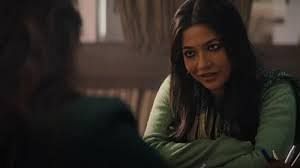
The film was Bangladesh’s entry for the Best International Feature Film category at the 94th Academy Awards. At the 14th Asia Pacific Screen Awards, Badhon won the Best Actress award and bagged the Hong Kong Asian Film Festival award in the new talent category for her role.
According to Jewel, Bangladeshi actors are involved in some amazing projects now, which is making them hungry for more.
He sees actors as global assets. “Borders cannot contain art.”
(Edited by Zoya Bhatti)


